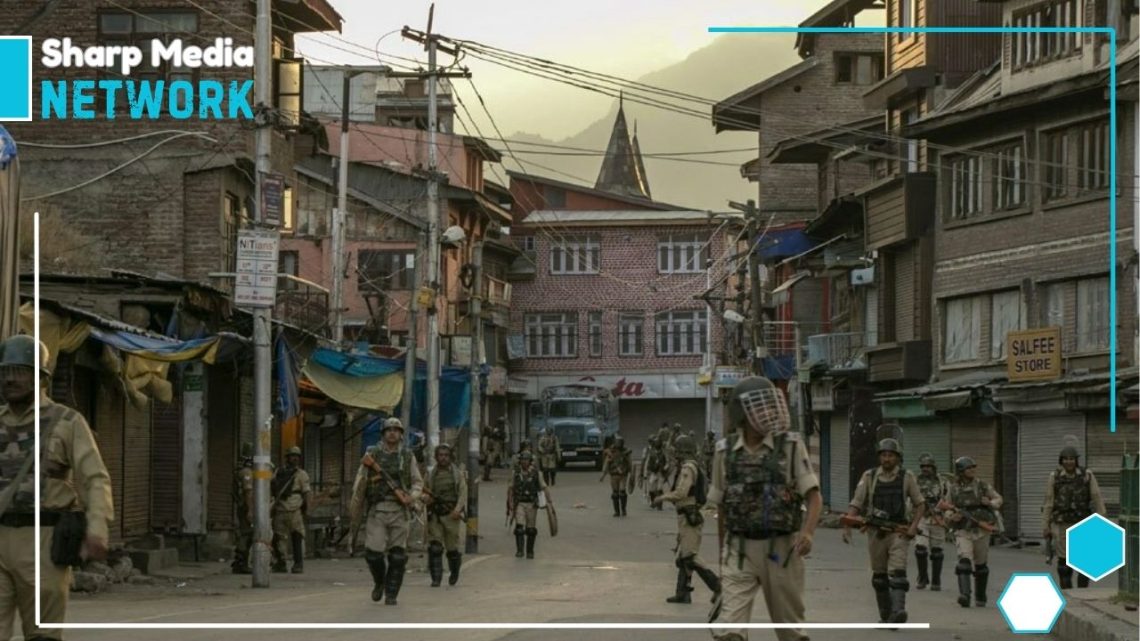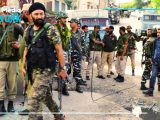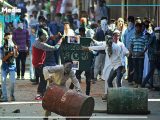
Modi’s IIOJK Visit: The Propaganda Amidst Heightened Restrictions
January 13, 2025In IIOJK, intense restrictions ahead of Indian PM Modi’s visit spark outrage among Kashmiris.
Authorities in Indian Illegally Occupied Jammu and Kashmir (IIOJK) have further tightened restrictions ahead of Indian Prime Minister Narendra Modi’s visit, scheduled for Monday. The move has drawn widespread criticism and deepened frustrations among the region’s beleaguered population.
The visit is widely seen as a propaganda exercise aimed at projecting normalcy while ignoring the Kashmiri people’s legitimate aspirations for freedom and justice.
Security measures have been drastically enhanced, with the deployment of the Special Protection Group (SPG) at strategic locations such as the Z-Morh Tunnel. Additional checkpoints have been set up, and surveillance has been ramped up across central Kashmir. A senior police official confirmed, “A coordinated security grid involving police, paramilitary forces, and the Indian army is in place. These measures will remain until today, January 13.”
The restrictions include extra personnel, extensive CCTV coverage, drone monitoring, and new frisking points. These measures severely limit locals’ mobility, adding to their daily challenges. Additionally, authorities have suspended traffic on the Kargil-Srinagar highway and Zojila Pass, compounding the disruption.
In preparation for Modi’s visit, 14 Administrative Secretaries have been instructed to remain in Srinagar’s Civil Secretariat until today. Residents view these moves as an extension of oppressive policies under the guise of security, further alienating the already disillusioned population.
While the Indian government portrays the visit as a step toward “development” in IIOJK, critics argue it is a calculated attempt to legitimize India’s control over the region and distract from the harsh realities on the ground. A political analyst in Srinagar remarked, “This visit is a cruel joke on Kashmiris, who remain trapped under India’s military stranglehold.”
Many locals and observers see Modi as the architect of aggressive military operations in Kashmir. His visit is perceived as another attempt to project a false narrative of peace and progress. A senior journalist in Jammu noted, “Kashmiris view this as part of India’s campaign of deceit and oppression.”
The visit comes at a time when IIOJK remains one of the most militarized zones in the world. Critics say the so-called development agenda serves as a façade to deflect attention from human rights abuses and the denial of Kashmiris’ right to self-determination.
“Kashmiris are not opposed to peace or development,” said a spokesperson for a local rights group. “But genuine peace and progress are only possible by ending military occupation and allowing a UN-supervised plebiscite.”
Activists point out the contradiction in India’s claims of development while the region suffers under communication blackouts, arbitrary detentions, and suppression of dissent. “How can peace and progress thrive in what is essentially an open-air prison?” questioned one human rights advocate.
As Modi prepares for his visit, the Kashmiri people remain steadfast in their demand for a just resolution that honors their fundamental rights and aspirations. Despite propaganda efforts, the truth of IIOJK’s plight continues to resonate internationally, raising the question: can staged visits obscure the harsh reality, or will the voice of justice prevail?

